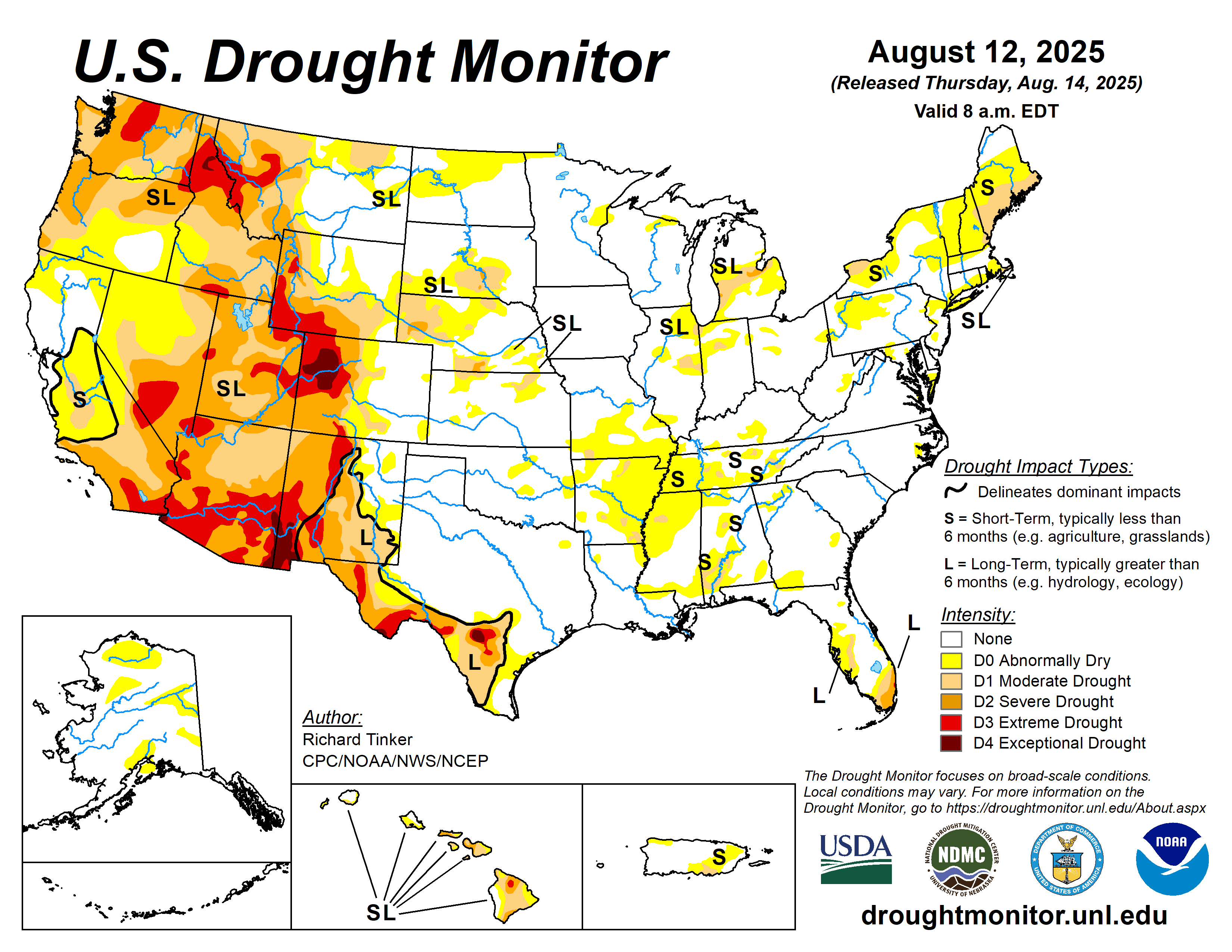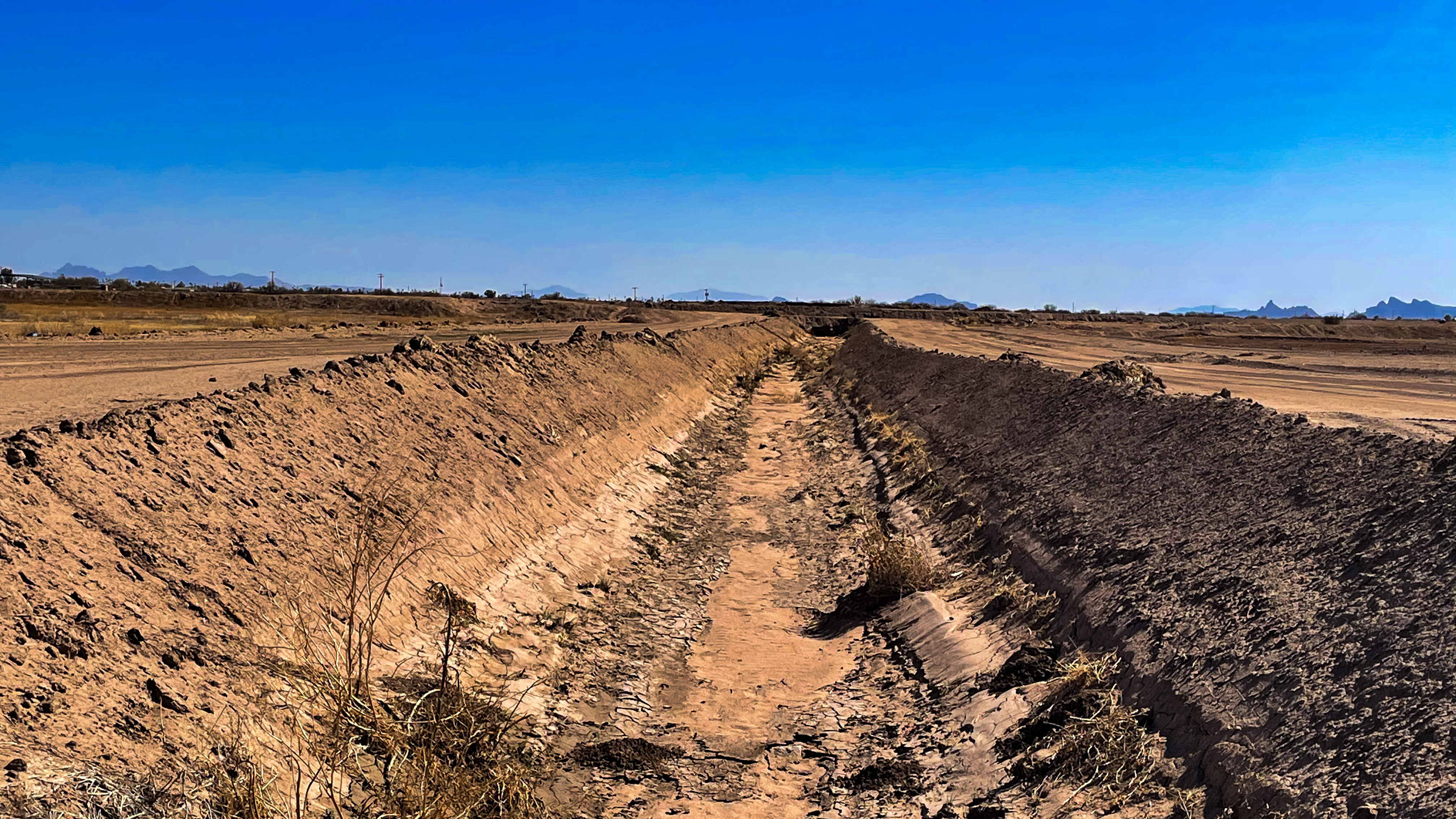
Drought and Responsible Water Management

Water is a precious resource to all farmers and ranchers, and infrastructure, technology, and conservation are especially critical in regions receiving less rainfall than the rest of the country. Water access in the drought-impacted regions has far-reaching effects for American agriculture and consumers near and far As of November 2023, over 55% of the U.S.—from the Gulf Coast to Central Plains—are facing abnormally dry conditions or worse. In Louisiana, exceptional drought, the most extreme drought rating, covers nearly 75% of the state threatening close to $10 billion in agriculture-related economic activity.
Water Usage
Farmers are continuously improving their water conservation as they grow the food, fuel and fiber we all depend on, thanks to advances in technology. While U.S. agricultural production has increased to meet the demands of a growing population, the amount of water used for agriculture has remained steady as more farmers adopt precision technology and more advanced irrigation systems. For example, through drip irrigation, farmers reduce water use up to 40% by getting moisture directly to each plant. Advances are also being made in humidity-sensing technology that helps farmers determine how much water is needed for each crop, down to the drop.
Storage and Recycling
Federal and state investments in infrastructure have been critical to the development of the American West. Dams, reservoirs and canals maximize limited precipitation throughout the often-arid West, deliver water to consumers and businesses, and play a central role in powering not only agriculture but also energy grids. Water infrastructure across the West is long overdue for an upgrade, however, with many federal canals, dams and reservoirs 50 to 100 years old.
Innovation is also bringing solutions to the table with advanced practices to maximize our limited water resources. Technology like desalination, reuse and recycling can repurpose water otherwise not fit for consumption or use. Technology is bringing water back into the cycle more quickly and helping farmers and other industries recharge this precious resource.
Sustainability
Water on the farm and ranch sustains life there and beyond, as farmers grow the food, fiber and fuel that we all depend on. Agricultural water use is also critical to supporting local wildlife and replenishing soil moisture and groundwater. Irrigation plays an important role in not only conserving but also strategically using water on farmland. Flood irrigation, for crops such as rice, can provide habitat for migratory birds, and irrigation furrows in farm fields also help recharge depleted groundwater. Ranch and farm ponds for livestock serve a dual purpose as well with birds and other wildlife taking advantage of these watering holes.
By the Numbers
AFBF economists and state Farm Bureau staff closely track the drought conditions across the country. During the significant drought conditions in 2022, AFBF designed and distributed a survey to Farm Bureau members in the West to assess the drought’s impact on farm and ranch businesses. AFBF economists continuously monitor agricultural conditions in the region and have previously spotlighted state specific hardships faced by our farm and ranch families through Farm Bureau’s Market Intel service.
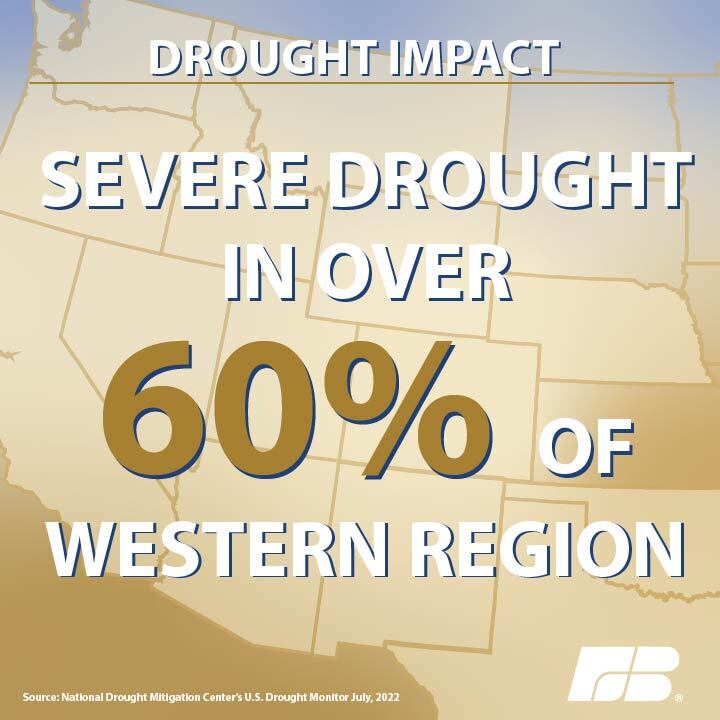
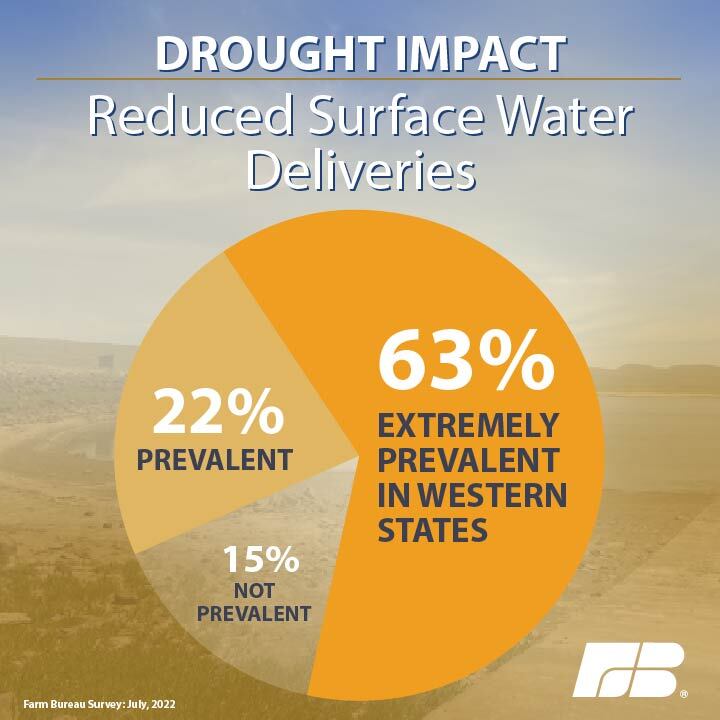
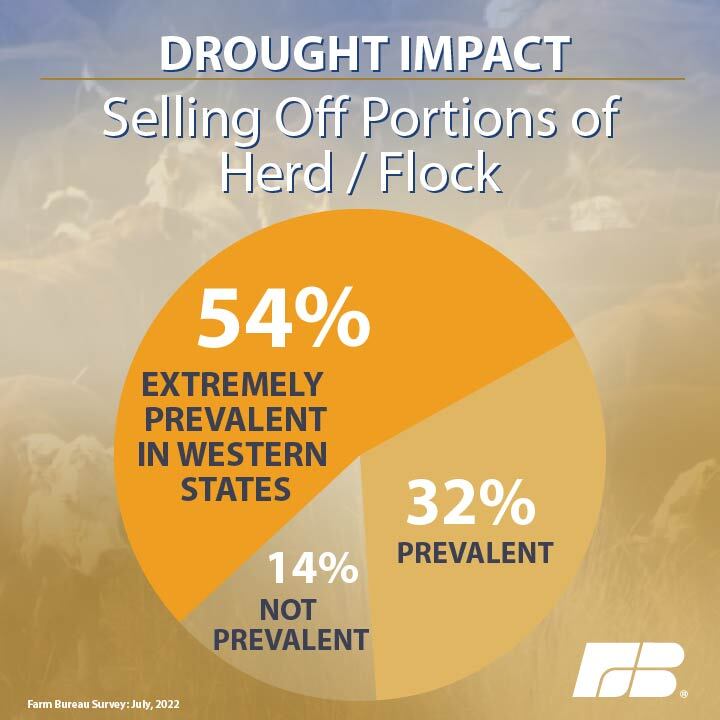
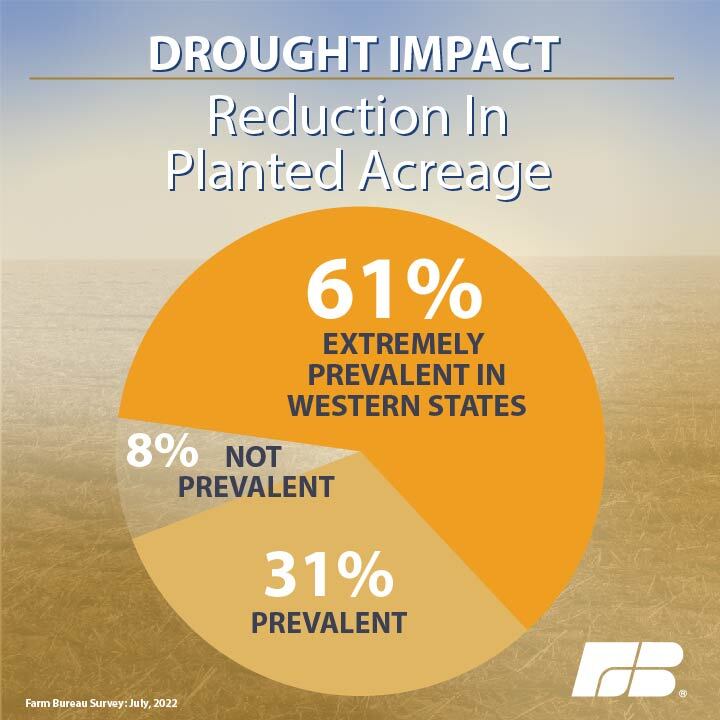
On the Ground
TAGS
Top Issues
VIEW ALL